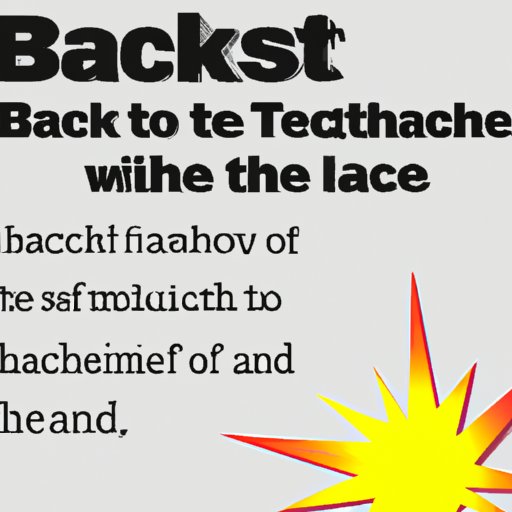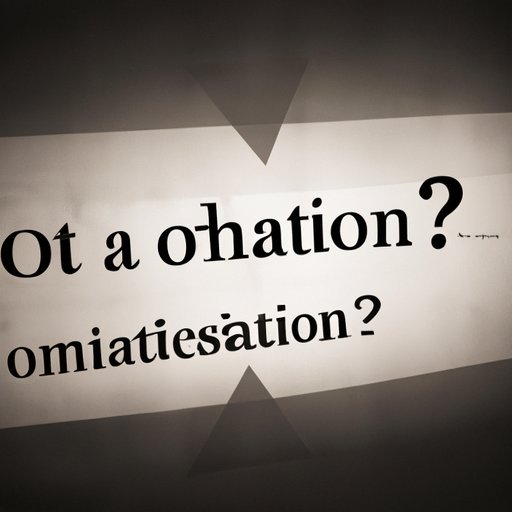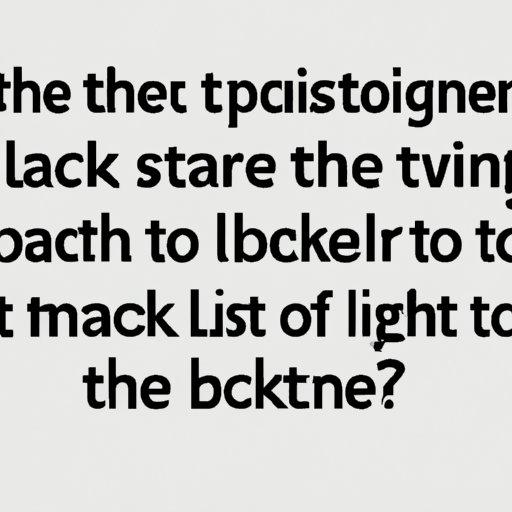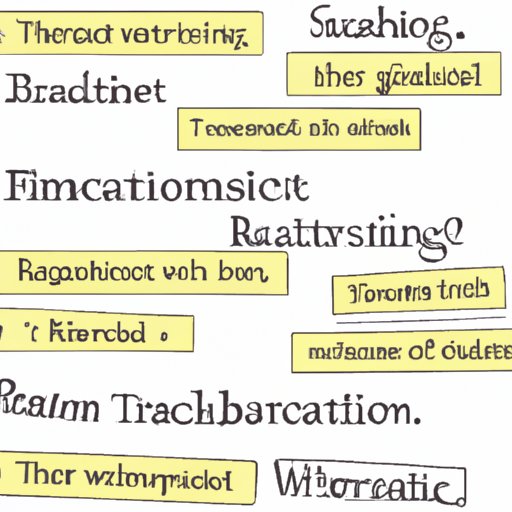Introduction
A flashback is a literary device used to show events that happened in the past. It can be used to provide background information about a character, plot, or setting. When done correctly, flashbacks can add depth and emotion to a story and help readers understand the characters’ motivations and decisions. In this article, we will explore different techniques for transitioning into a flashback in writing.

Use a Descriptive Sentence to Introduce the Flashback
One way to introduce a flashback is to use a descriptive sentence. This sentence should evoke a specific emotion or image related to the flashback. For example, if the flashback is about a traumatic event, you could start with a sentence like “The memories came flooding back.” If the flashback is about a happy moment, you could start with a sentence like “The sun shone brightly on that perfect day.” Using a descriptive sentence to introduce a flashback can help set the tone and create an effective transition.

Transition with a Rhetorical Question
Another way to transition into a flashback is to use a rhetorical question. This can be an open-ended question that doesn’t have an answer, or it can be a question that implies the answer. For example, if the flashback is about a difficult decision the character made, you could start with a question like “What would have happened if she had chosen differently?” Or, if the flashback is about a sad moment, you could start with a question like “What did it feel like to lose everything?” Asking a rhetorical question can help build suspense and lead the reader into the flashback.
Introduce the Flashback with a Statement of Realization
A statement of realization is a powerful way to introduce a flashback. This is a short phrase or sentence that expresses a sudden understanding or insight. For example, if the flashback is about something the character has been struggling to understand, you could start with a statement like “Suddenly, it all became clear.” If the flashback is about a moment of great joy, you could start with a statement like “She realized she was truly happy.” A statement of realization can help create a strong emotional connection between the reader and the character.
Start the Flashback with a Sensory Description
Using a sensory description to start a flashback can be a great way to draw the reader in. This can be a description of what the character sees, hears, smells, tastes, or feels. For example, if the flashback is about a sunny day at the beach, you could start with a description like “The sand was warm beneath her feet and the sun was shining brightly in the sky.” Or if the flashback is about a scary moment, you could start with a description like “The air felt thick and heavy and there was a chill in the room.” Using a sensory description to start a flashback can help the reader experience the scene along with the character.

Begin the Flashback with a Line of Dialog from an Earlier Scene
Starting a flashback with a line of dialog from an earlier scene can be an effective way to transition. This line of dialog should be related to the flashback and help set the stage for what is to come. For example, if the flashback is about a conversation between two characters, you could start with a line from an earlier scene in which one character says “I think we need to talk.” This line of dialog will help prepare the reader for the upcoming flashback and create a smooth transition.
Conclusion
In conclusion, there are several ways to transition into a flashback in writing. You can use a descriptive sentence to introduce the flashback, transition with a rhetorical question, introduce the flashback with a statement of realization, start the flashback with a sensory description, or begin the flashback with a line of dialog from an earlier scene. By using these techniques, you can create an effective transition and help the reader experience the flashback along with the character.
(Note: Is this article not meeting your expectations? Do you have knowledge or insights to share? Unlock new opportunities and expand your reach by joining our authors team. Click Registration to join us and share your expertise with our readers.)
